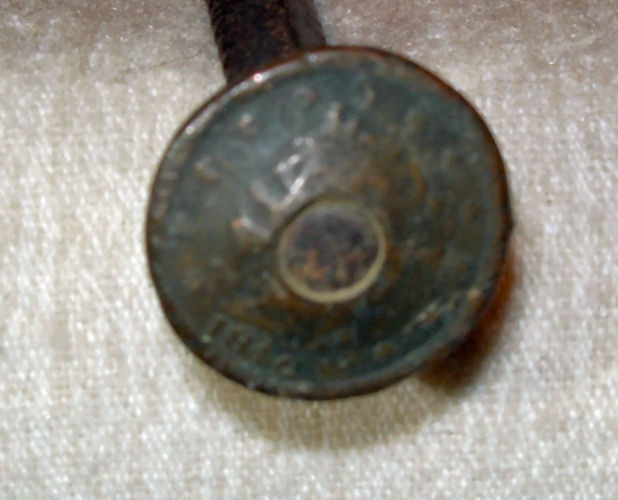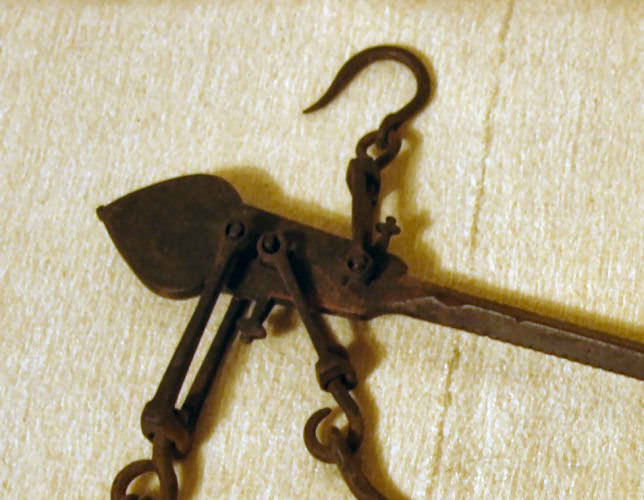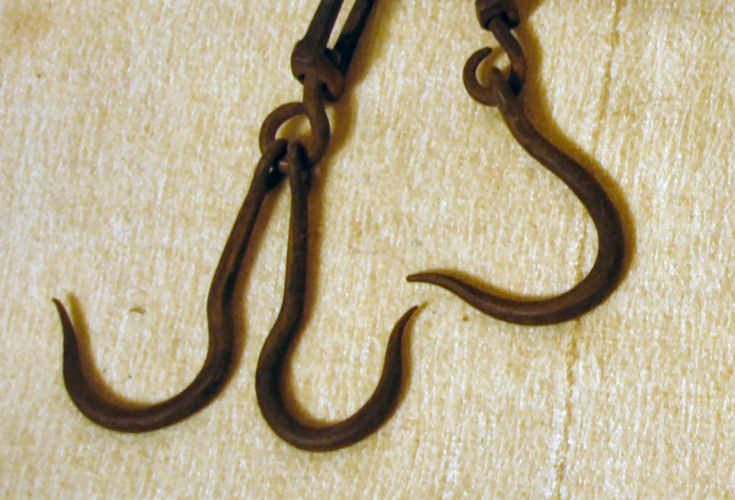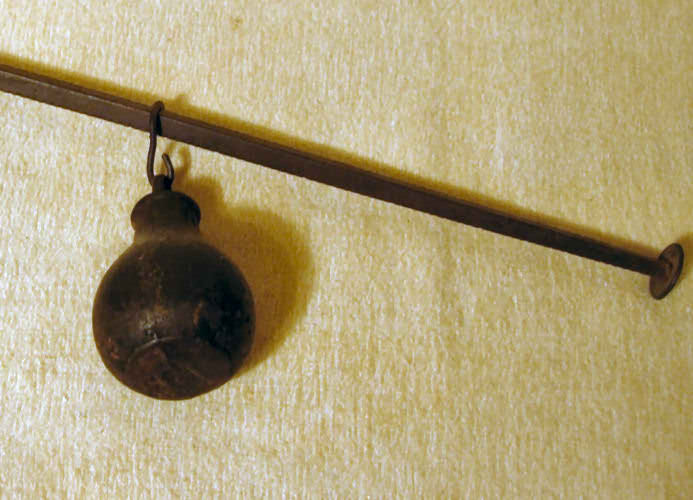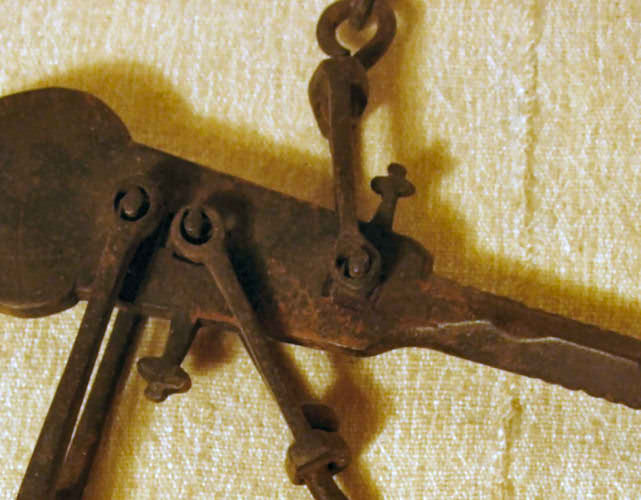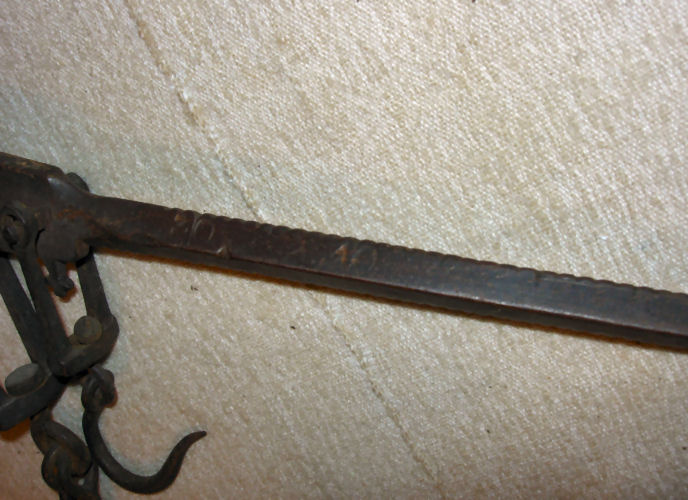

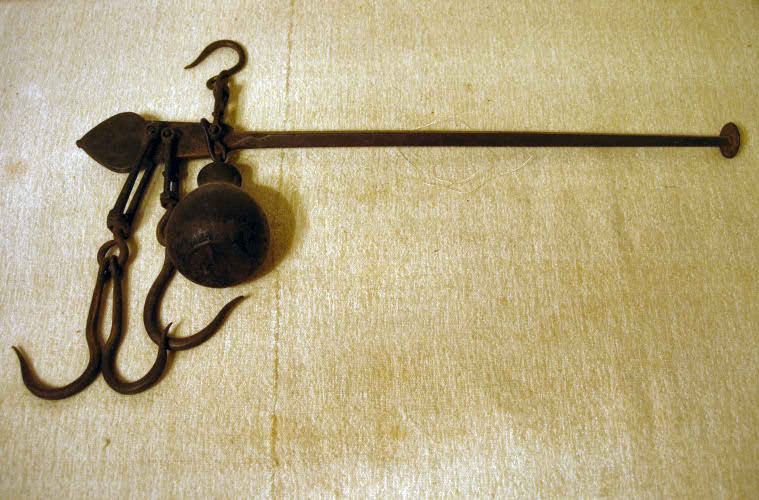
| This iron scales dates from 1846. That date is known because when scales like these were made, a coin from the year was usually attached to the end of the arm. The coin attached to the arm of this scales is dated 1846. The date on the coin can be seen in the photograph below. This type of hanging scales is sometimes referred to as a Roman Balance because scales of this type were first used during the time of the Roman Empire. According to Jaime Morrison in the website, thenonist.com: "The Romans brought these scales to Britain around 55 B.C.E., and the English word 'steelyard' by which they are referred today is thought to be a mistranslation of the German 'Stael-hof', which was itself the name of the base of the Hanseatic merchants of the Middle Ages, who used the Roman balance extensively in their businesses." Farmers would often use these scales to weigh pieces of meat, such as from a butchered pig, skewering the dangling hooks into the piece of meat, then hooking the top hook over a nail in a beam, or over a branch of a tree, so that the scales with its dangling weight could hang freely. Then the large bulbous counterweight would be moved outward along the arm until the small cross would line up with the arms of the top hook. |
